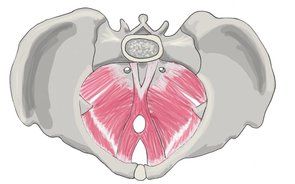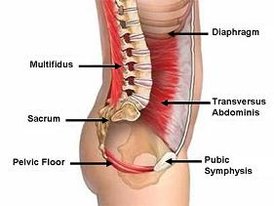03/06/2019 - Albert Sola Renart
At Postural Patterns we see the body as a whole. Segmenting or separating one part is always pretentious because the same muscle could be doing one function in one condition and a very different function in a different position, for example. Skin, muscles, connective tissue, organs, bones and nerves compose us and yes, fascia (connective tissue) holds us together and supports our movement tremendously. Muscles, to us, no longer have isolated "actions" but a function in the whole system.
Thursday: 09:00–19:30
Friday: 09:00–19:30
Saturday: 09:00–19:30
Sunday: 09:00–19:30
Overtoom 570
1054LN Amsterdam

A hypertonic or tight pelvic floor or some of it's muscles are muscles that are "switched on" or in a contracted position and that they cannot switch off or relax, during resting. This role is unnecessary and counterproductive to the system and there is the need to "communicate" in a body level. This excess of energy, lack of movement, excess of it, exercise stress (normally from crossfitters, yogis or gymnasts), flexibility and awareness often makes trigger points appear.
These trigger points, when active, they send referred pain to nearby structures.
Pelvic floor muscles are crucial for bowel movement and control of the sphincters, they support the organs and assist in core function. It connects the breath and to life. In men not so much, but in women it also regulates orgasms, in their quantity and quality. A dysfunction in pelvic floor muscles will have a direct impact in the intimacy, self-worth, self-love, acceptance and more emotional states. Sexuality is part of life and part of health.

Whether the origin for the hypertonicity is immunologic, biochemical, structural, ... there will always be an "excess" of energy in the muscle. Resolving the affective componenent will be the key, together with structural bodywork. In a level it is an "alarm"reaction, like in the first and second stage of stress, that follows with an excess of energy. Both men and women can have it.
Therapies that work Locally:
There are a sum of different specialists that work locally such as pelvic floor physiotherapists, pelvic floor physical therapy or pelvic floor release therapy that use soft tissue manipulations or massage to relieve pelvic pain by accessing muscles that cannot be reached any other way. Passive therapy.
Therapies that work Globally:
Chiropractics or osteopathy deliver results, even though they don't include movement or active empowerment, with whole body connections in movement, which ultimately would integrate a newer or forgotten healthy pattern in the body. Structural Bodywork head to the root in posture and movement to use them during soft tissue manipulations to unlock the restrictions of the whole body in a process of 3 or 5 sessions to gain "space", awareness, freedom of movement, stress release, release of tension globally,...
Therapies that work Holistically:
There are all forms of therapy that focus and explore the pelvic floor, directly and indirectly in their own context. Tantra practices of internal pressure point massage as well as external, to heal trauma stored. Breathwork is one of the most useful tools you can have to address the issue. Other energy therapies are also having results in small scale, always depending on many factors.
Our practice is hosted at and there is a collaboration with the Pilates studio The Movement Practice, in Amsterdam. Albert (PP founder) trusts 100% with the TMP team. PP approach is different when addressing hypotonic to hypertonic muscles, being the first one solved in Albert's CORE sessions, hypopressive exercises and pilates. The second one is addressed globally, distally and proximal, never internally, withstructural bodyworkandActive Fascial Release (AFR). Breath is a common denominator of any healing process and treatment of pelvic floor dysfunctions, because there is a strong natural connection of the 3: BREATH, PELVIC FLOOR and LIFE. Only as a last resort (rare cases) a referral to a specialist will be given.
Whether i comes from a trauma/s, conditioning, bad experiences, childbirth, repeated stress, exercise stress, self-sabotage, it's ALL ok, the first thing to do is to bring the body and the person and the awareness to their body. To remember their potential and infinite self
METAPHORS THAT CAN HELP YOUR EMOTIONAL PROCESS:
TAKE YOUR TIME and listen inside for the answer.